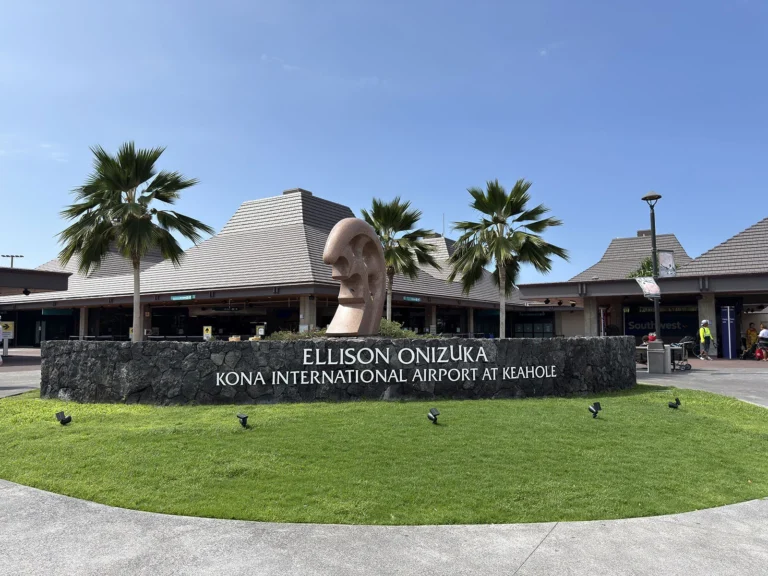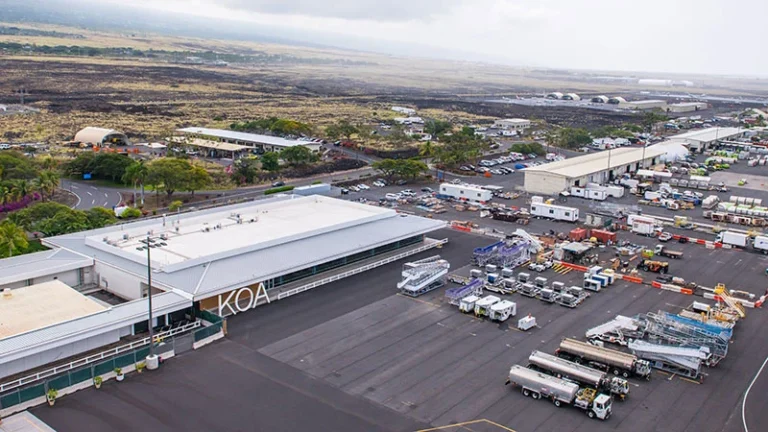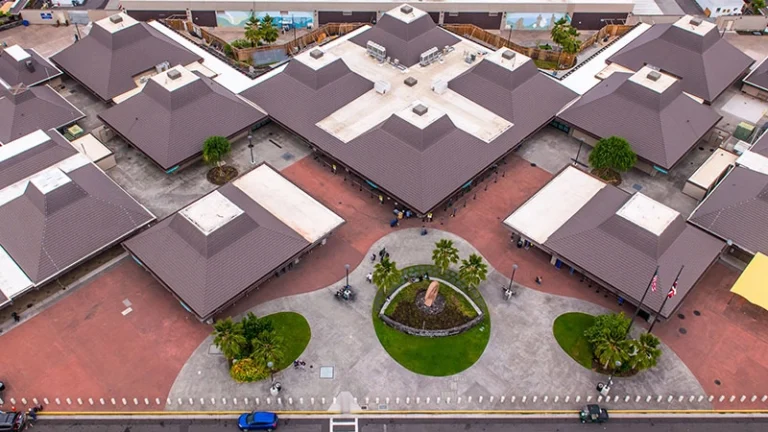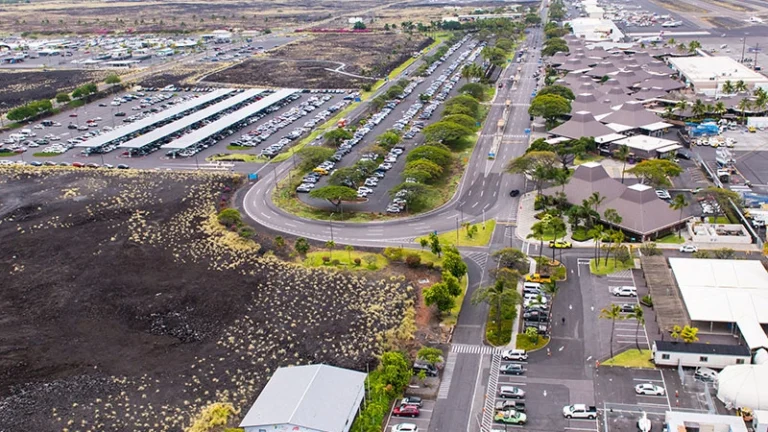The History of Ellison Onizuka Kona International Airport at Keahole
Kona International Airport at Keahole, located on the western coast of Hawaii Island, opened on July 1, 1970, replacing the old Kailua-Kona Airport. Constructed on lava fields, the airport featured a 6,500-foot runway, terminal buildings and a Polynesian-inspired architectural design.
Throughout the 1980s and 1990s, the airport underwent multiple expansions. The runway was extended to 11,000 feet in 1994, making it the longest of the neighbor islands and capable of accommodating wide-body aircraft. This paved the way for direct international flights with the first arriving from Japan in 1996. Other notable developments included terminal enhancements and the addition of customs and immigration facilities to support overseas travel. The airport also received numerous infrastructure upgrades, including new taxiways, fire rescue facilities, and expanded cargo operations.
Kona International Airport was officially renamed as Ellison Onizuka Kona International Airport at Keahole on January 1, 2017, in honor of the famous astronaut who was born and raised on the Island of Hawaii. The change was signed into law by Hawaii Governor David Ige in 2016, recognizing Onizuka’s legacy and contributions as the first Asian-American and first person of Japanese ancestry to travel to space.

In 2021, a permanent Federal Inspection Services (FIS) facility was opened, maintaining KOA as one of two international entry points into Hawaii. Today, the airport continues to serve as a key gateway to Hawaii Island supporting tourism, commerce and interisland travel.



